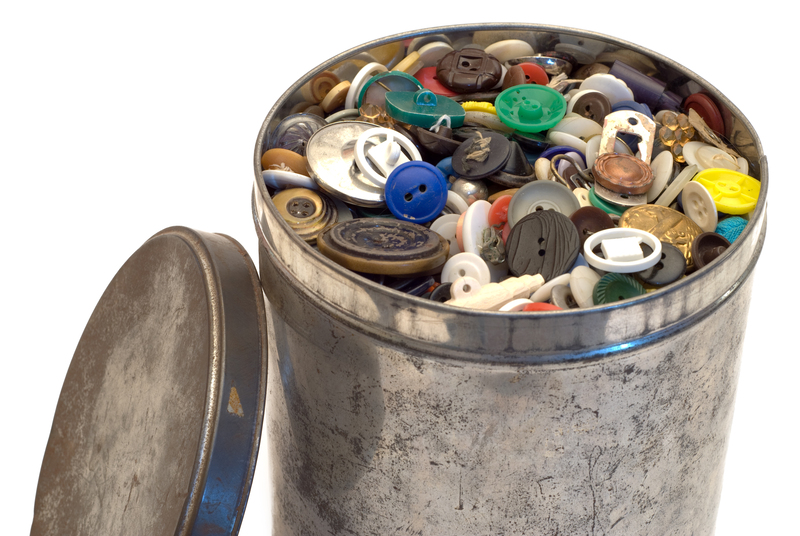Chronicles of Waste: Human Ingenuity From Past to Present
Waste is a byproduct of life, society, and progress. From ancient civilizations to the technological marvels of the modern era, the way humans manage and transform waste has reflected not just necessity, but human creativity, adaptability, and ingenuity. This article takes you on a fascinating journey through the history of waste management and innovation, analyzing how our attitudes, systems, and technologies have evolved to confront the challenge of waste. Discover how the chronicles of waste tell a compelling story about humanity's resourcefulness--from the dawn of civilization to today's eco-innovations.

The Ancient Origins of Waste Management
Waste is as old as civilization itself. Early human settlements produced organic and inorganic waste as they gathered, hunted, and later, farmed. The management of waste was vital for communal health, safety, and even spiritual practices. Let's explore early examples of waste management and the manifestation of human ingenuity in addressing these challenges.
Prehistoric Waste Solutions
- Midden Heaps: Archaeologists often uncover ancient trash piles, known as middens, containing shells, bones, pottery shards, and other remnants. These early landfill sites show how prehistoric peoples separated living spaces from waste dumps--a surprisingly sophisticated practice to maintain hygiene.
- Organic Recycling: Early agrarian societies discovered that food scraps and animal dung could enrich their fields, leading to the earliest forms of composting.
Urban Waste in Ancient Civilizations
As cities formed, waste management became a collective challenge. The ingenuity displayed by these civilizations remains impressive:
- Mesopotamian Drainage: Cities like Ur (4000 BC) installed baked clay drains beneath streets, channeling waste and stormwater away from households.
- Roman Sewers: The Cloaca Maxima, Rome's ancient sewer system, not only managed waste but also helped prevent disease and flooding.
- Greek Recycling: Ancient Greeks practiced ostraka, using old pottery shards as voting ballots, giving refuse a second life.
These early societies laid the groundwork for complex waste systems, demonstrating that the chronicles of waste are deeply woven into society's fabric.
Medieval and Renaissance Waste: Challenges and Creative Solutions
From Street Refuse to Recycling in the Middle Ages
- Urban Waste Accumulation: Medieval European cities saw the rise of crowded, labyrinthine streets, exacerbating the visible pile-up of waste. The phrase "throwing the baby out with the bathwater" is said to originate from the era's household lunacy of dumping dirty water out of windows--sometimes without warning passersby!
- The Emergence of Waste Professions: "Rakers" collected nightsoil and refuse, recycling human waste as fertilizer or energy for brick kilns.
- Reclaiming and Repurposing: Medieval tanners collected animal dung and urine for leather processing, showcasing enduring resource efficiency.
Renaissance Thought and Environmental Awareness
During the Renaissance, ideas of hygiene, urban planning, and public health began to shape waste management. Cities like London experimented with rudimentary sewage systems, and legislation emerged to keep streets cleaner. Yet, waste was still often managed by rudimentary methods--buried, burned, or dumped.
The Industrial Revolution and the Birth of Modern Waste
The Industrial Revolution (18th-19th centuries) turbocharged waste production, introducing unprecedented urban and environmental challenges. With factories sprawling, consumer goods multiplying, and populations booming, waste grew in type, scale, and complexity.
Waste as a Resource: Upcycling and Innovation
- Rag-and-Bone Men: In Victorian England, entrepreneurs scavenged for reusable rags, bones, and metals. These materials were sold to make paper, glue, or soap--an early form of recycling.
- Organic Waste for Energy: Methane from decomposing organic matter was harnessed for street lighting in some European cities--a testament to human adaptability and resourcefulness.
Systematic Waste Management Evolves
- First Municipal Services: The city of Paris introduced the world's first systematic garbage collection in the 19th century, followed by other burgeoning metropolises.
- Landfills and Incinerators: New waste types--plastics, metals, chemicals--led to the creation of the first sanitary landfills and municipal incinerators, major milestones in the chronicles of human waste management.
These developments reveal not only the growing complexity of waste but also human ingenuity in adapting and innovating solutions.
20th Century Waste: The Age of Consumerism & Environmental Crisis
Disposable Society and Its Discontents
The mid-20th century marked an explosion in mass production and disposable goods, transforming waste generation. Packaging, single-use plastics, and planned obsolescence led to mountains of trash and new environmental concerns.
- Suburban Landfills: As urban populations migrated to suburbs, so did their waste--vast landfills dotted the landscape, posing hazards to air, water, and ecosystems.
- From Smog to Environmentalism: The visible impacts of pollution and waste spurred landmark movements--culminating in the first Earth Day in 1970 and the rise of environmental legislation.
Technological Ingenuity Meets the Waste Challenge
- Automated Sorting: Recycling facilities began introducing conveyor belts and magnets to sort paper, metals, and plastics.
- Waste-to-Energy Plants: Incineration technology evolved to generate electricity and heat from garbage, reducing landfill volume and extracting value from waste.
- Hazardous Waste Solutions: Regulations and technology improved storage, treatment, and remediation of dangerous waste materials.
Throughout the 20th century, innovative waste solutions battled with the overwhelming scale of global waste, underscoring the double-edged sword of progress.
The Modern Era: Inspiring Ingenuity in the Face of a Waste Crisis
Zero Waste Movements and Circular Economies
- Zero Waste Philosophy: Cities like San Francisco and Kamikatsu in Japan have adopted audacious zero-waste goals, pushing for reuse, recycling, and composting of 100% of municipal solid waste.
- Circular Economy: The linear "take-make-dispose" model is being replaced with a circular economy, where products are designed for durability, remanufacturing, and regenerative use of materials.
- Bio-Inspired Innovations: Inventors and scientists are turning to nature, developing biodegradable plastics and bioreactors capable of digesting organic waste into fertilizer, fuel, or feed.
Tech-Driven Waste Management:
The 21st century has witnessed a seismic technological leap in the fight against waste:
- AI-Powered Sorting: Robotics and artificial intelligence enable real-time recognition and separation of materials, making recycling systems more efficient than ever.
- Smart Bins and Data Analytics: Internet of Things (IoT) sensors optimize collection routes, monitor bin fullness, and track waste generation patterns, revolutionizing urban waste services.
- Upcycling and Maker Movements: Artists and DIY communities are transforming discarded materials into high-value goods--from fashion to furniture--showcasing creativity and sustainability.
Global Challenges and Global Solutions
Despite remarkable progress, the global waste crisis remains immense. According to the World Bank, global annual solid waste generation is projected to reach 3.4 billion tons by 2050. In response, global collaboration and innovation are vital.
- International E-Waste Treaties: With the rise of electronic waste, treaties like the Basel Convention regulate transboundary movements to prevent illegal dumping.
- Ocean Cleanup Initiatives: From giant floating booms to micro-robotic ships, new technologies are being deployed to extract plastic from oceans, rivers, and coastlines.
- Global Awareness Campaigns: Social movements and education spur action at every level, empowering people to rethink consumption and disposal habits.
Chronicles of Waste: Inspiring Examples of Human Ingenuity
Turning Trash Into Treasure
- EcoBricks: In countries like Indonesia and South Africa, plastic waste is stuffed into bottles to make durable building blocks for homes, schools, and community centers.
- Waste-to-Art: Visionary artists around the world sculpt masterpieces from discarded electronics, scrap metals, and plastics, sparking vital conversations about consumption and ecology.
- Regenerative Agriculture: Composting food waste on an industrial scale restores soil health, sequesters carbon, and produces renewable energy--all from what would otherwise go to landfill.
- Community Composting Initiatives: Urban neighborhoods now band together to set up local composting hubs, reducing methane emissions and creating nutrient-rich compost for community gardens.
Technology Meets Tradition
The fusion of ancestral wisdom and modern tools is especially evident in indigenous approaches to waste--which treat all materials as part of a living cycle. Around the world, traditional practices such as restorative harvesting, communal cleanups, and ritual reuse are being revitalized with new tools, creating inspiring models for sustainable futures.

Looking Ahead: The Future of Waste and Human Ingenuity
As climate change, urbanization, and resource scarcity accelerate, human innovation will be crucial in shaping the chronicles of waste. The next chapter might include:
- Bioplastic Breakthroughs: Advances in algae-based plastics, fungal packaging, and edible wrappers could make single-use plastics a relic of the past.
- Global Extended Producer Responsibility: Manufacturers will play a growing role in reclaiming, reusing, and recycling products throughout their lifecycle.
- Waste Mining: Old landfills may become valuable mines for rare metals, plastics, and nutrients, turning yesterday's waste into tomorrow's resources.
- Space Waste Solutions: With human activities extending to the stars, strategies for managing (and even reusing) orbital debris are becoming increasingly important.
- Behavioral Science and Policy: New incentives and nudges designed to promote sustainable waste habits could transform societies from the inside out.
Conclusion: The Unending Chronicles of Waste--A Testament to Human Ingenuity
Throughout history, waste has been a mirror of our societies: a challenge to be managed, an opportunity to innovate, and a call to stewardship. From the earliest midden heaps to today's smart recycling systems, the chronicles of waste showcase how human ingenuity evolves in the face of adversity.
Our ongoing response to waste--be it individual creativity, cultural adaptation, or industrial innovation--will shape the destiny of our planet. Embracing circular thinking, leveraging technology, and learning from the past, we can all play a part in steering the chronicles of waste toward a cleaner, more sustainable future.
As we close this exploration, remember--the way we manage waste is not merely a technical issue, but a test of our values, imagination, and collective will. Let's continue to write the chronicles of waste with the brilliance and ingenuity that defines humanity.